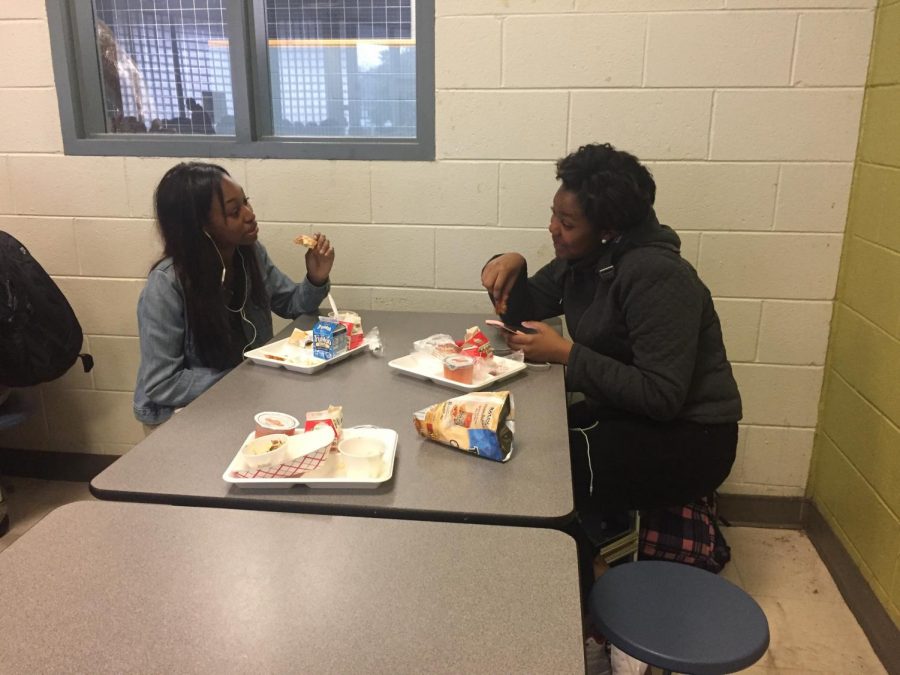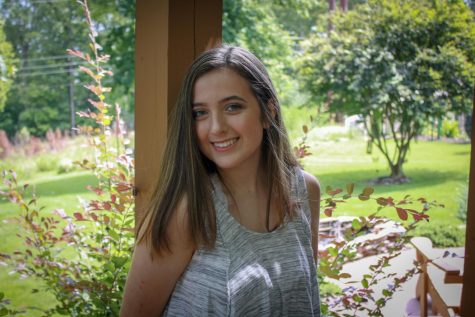Students depend on school meals
Eating nutritional lunches bought at school, Millbrook student Cayla Finch enjoys her break from classes. During the long holiday breaks and weekends there is no other way for students to get meals provided by the school.
January 22, 2018
With all the excitement leading up to the winter holidays, it can be easy to only focus on the break from your normal routine, meals with loved ones, or maybe even some gifts. For some Millbrook students thai is a whole different story. Roughly thirty million students eat lunch or breakfast at school every day. As of 2012, fifty-six percent of students who buy lunch are enrolled in the National School Lunch Program, or the NSLP. The NSLP is a federally assisted meal program in public schools nationwide that provides nutritionally balanced low-cost or no-cost and affordable lunches to children every day. For some, free or reduced-price school meals become a part of major nutrition. When schools close for the holidays, many families struggle to feed their families.
It can be hard to focus and learn on a empty stomach, but eighty-six percent of teachers say their students are coming to school hungry. Studies show hunger increases the chances of academic failure, which can push people towards unemployment, or even crime. The NSLP helps students improve their test scores, studies have shown students who eat breakfast do better overall on tests. For with the fifty-six percent of students enrolled in the NSLP, there is no option provided by the school for food during the holidays.
Luckily the Food Bank of Central and Eastern North Carolina provides food to people at risk of hunger by establishing soup kitchens, food pantries, and different programs for children and adults. Last year, the food bank distributed seventy million pounds of food to the needy. Last November, Millbrook’s food drive collected food and money, which was then donated to the food bank. Backpack Buddies, another program in Wake County to help solve childhood hunger, is a weekend food program that provides food to middle and high schoolers. Students who want to get involved can donate to the food bank and volunteer for the program.
Students can apply for the NSLP program based on parents salaries and living situations. “I believe it is important for schools to have programs like NSLP, because less fortunate families should save their money for more important things than school lunch,” said freshman Sabrina Johnson. With the long winter and spring breaks throughout the school year, there is still no major solution for hunger of students that rely on school meals as their primary source of food. Luckily, there is a solution during the summer at local schools where students who qualify can get two meals a day and a snack. With childhood hunger being a worldwide issue, there is still no solution for free food over school breaks which can lead to some people struggling to feed their families on school breaks.












